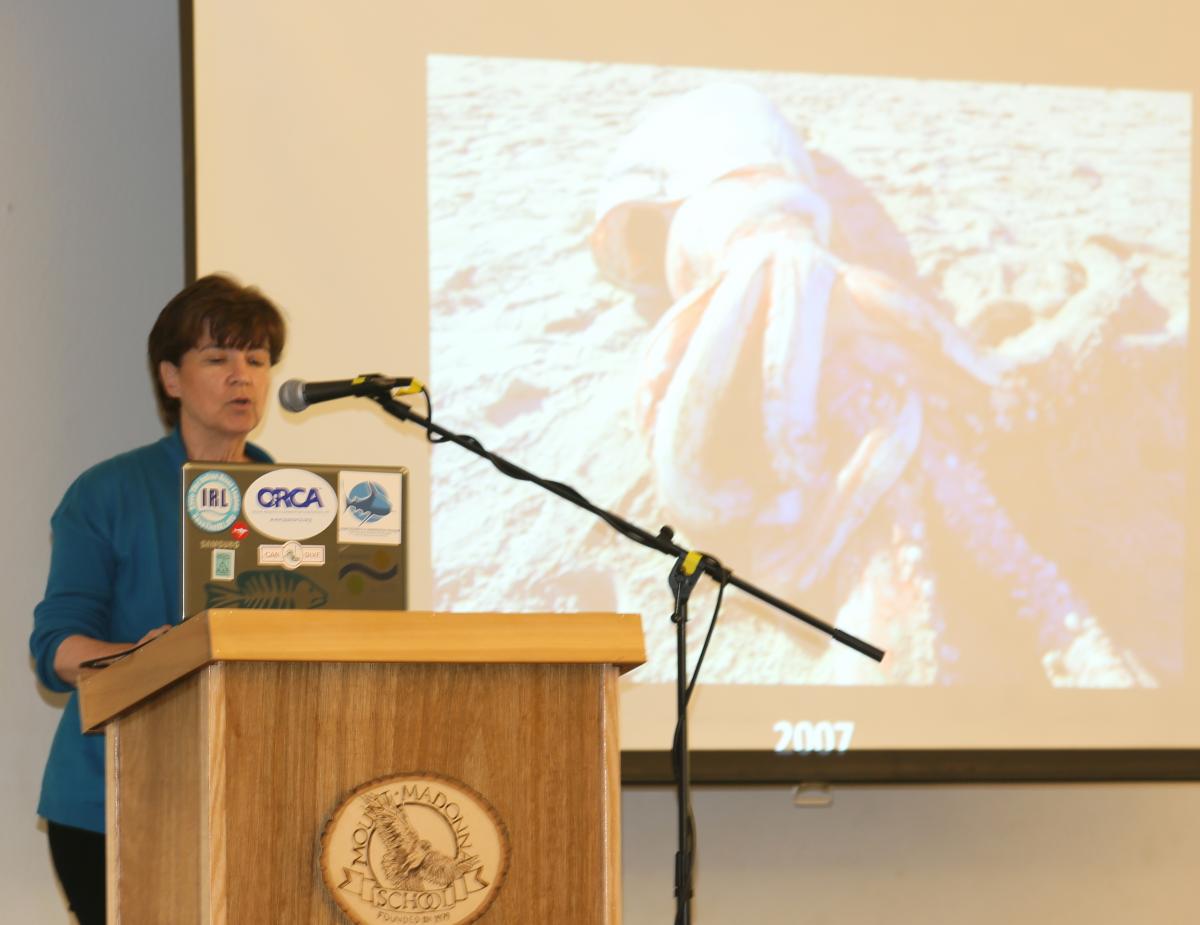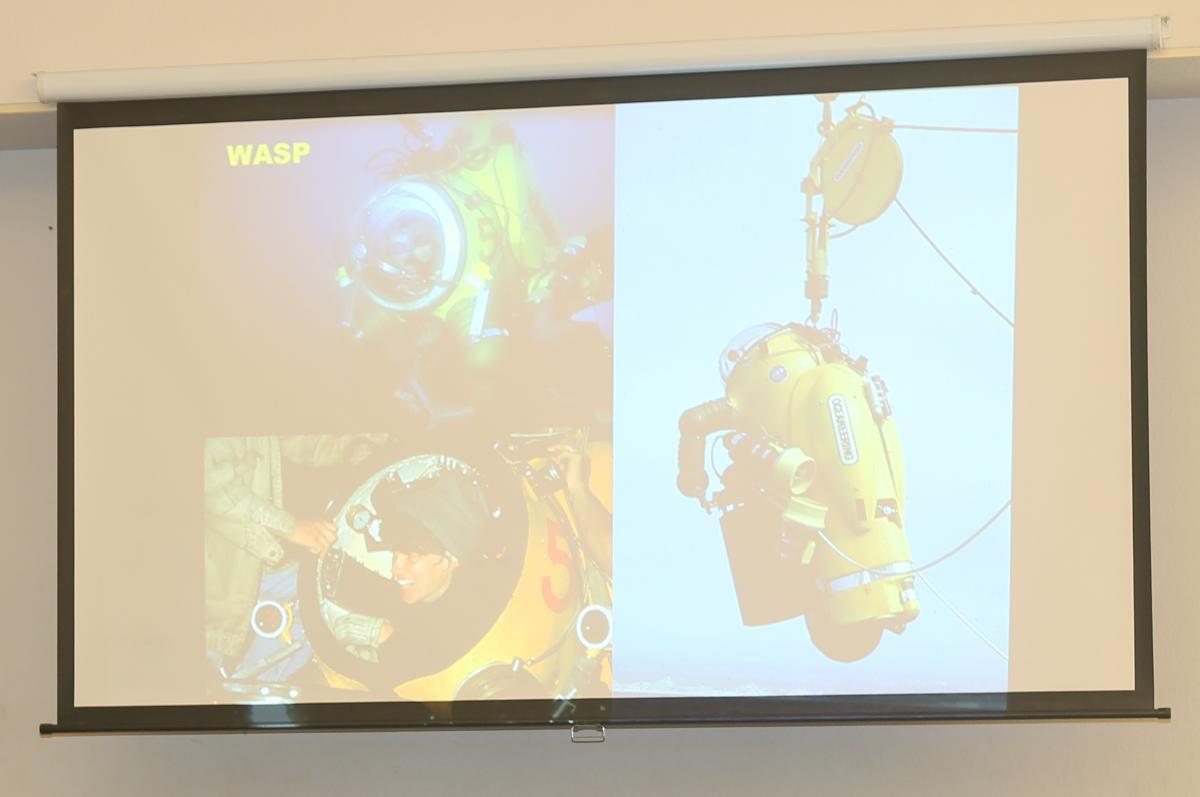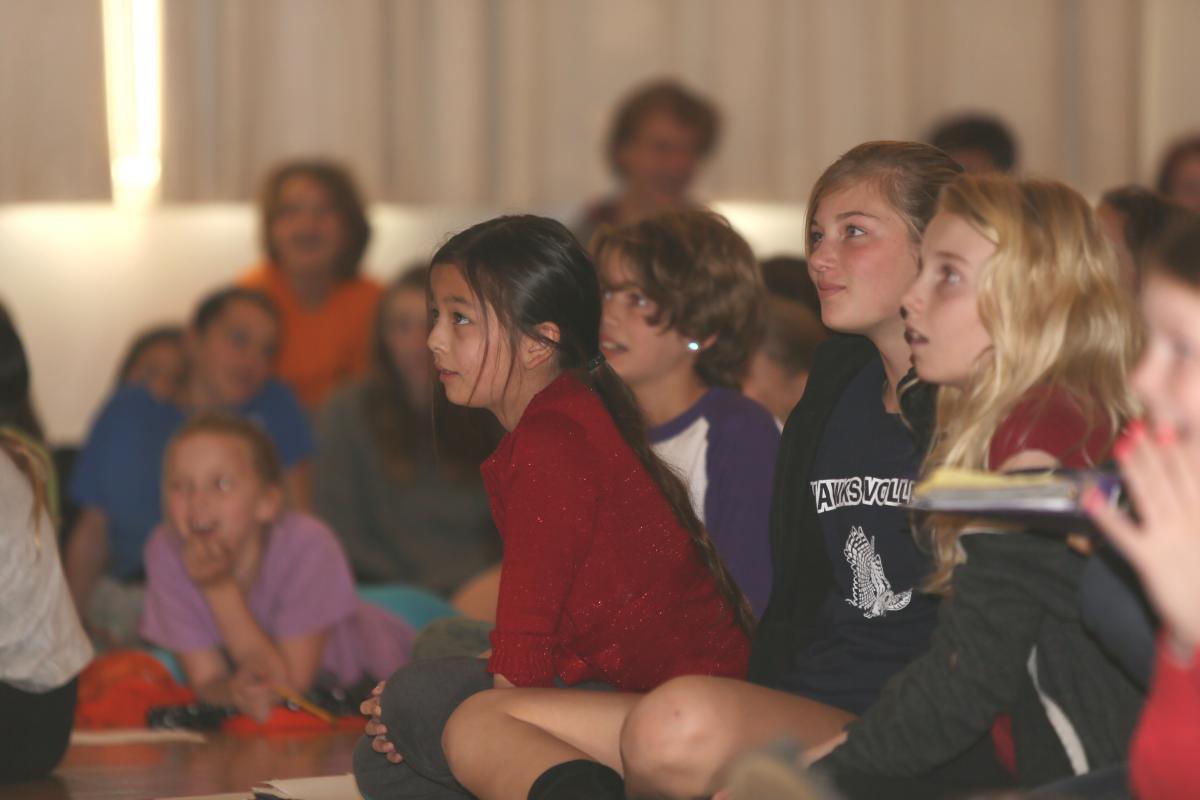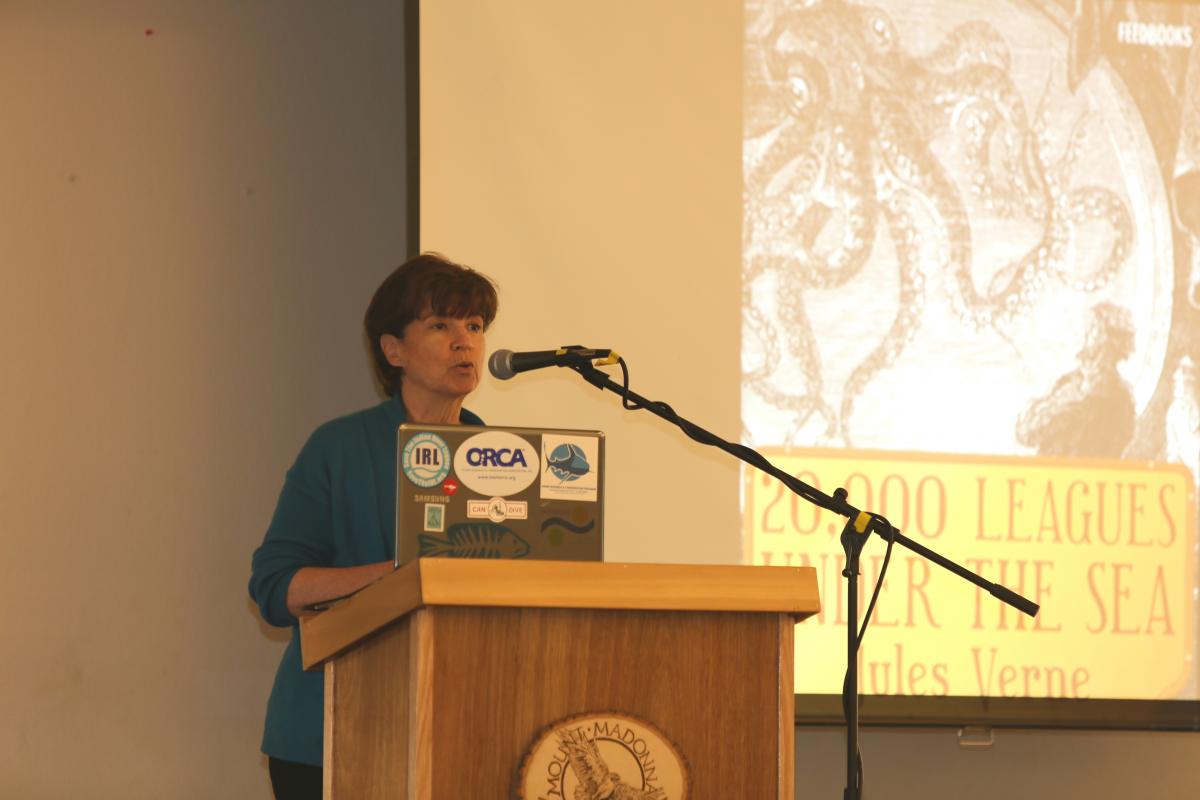 So many of us, young and younger alike, have read (or at least watched film versions of) Jules Verne’s iconic 20,000 Leagues Under the Sea . Captain Nemo’s underwater adventures are nothing short of legend, steering his Nautilus into the great ocean depths and, to this day, into our imaginations.
So many of us, young and younger alike, have read (or at least watched film versions of) Jules Verne’s iconic 20,000 Leagues Under the Sea . Captain Nemo’s underwater adventures are nothing short of legend, steering his Nautilus into the great ocean depths and, to this day, into our imaginations.And on November 18, the Mount Madonna School (MMS) fifth through twelfth graders delved into this incredible world of the deep blue sea, courtesy of Dr. Edie Widder, co-founder CEO and senior scientist of the Ocean Research & Conservation Association (ORCA) in Fort Pierce, Florida. With extreme clarity and an easy wit, Dr. Widder guided the students through the extraordinary sequence of events of how her basic curiosity for bioluminescent sea organisms eventually led her to an accomplishment of no mean feat — the filming of a live giant squid in its natural habitat.
Dr. Widder displayed an easy-to-understand cartoon to explain how she got the idea. A bioluminescent jellyfish will light up when it is being attacked. These lights attract a bigger predator (cue giant squid), who will then dine on whatever was trying to eat the jellyfish. So, Dr. Widder created an electronic jellyfish and, in the company of marine biologist Steve O’Shea and zoologist Tsunemi Kubodera, travelled to the Ogasawara Islands off the southern coast of Japan and submerged the electronic jellyfish, complete with filming capabilities, with the hopes of attracting something bigger.
 The scientists were not disappointed. Nor were the MMS students listening to the adventure. And when the video screen showed the huge tentacles of the giant squid attempting to prey on the ‘predator’ that was ‘attacking’ Dr. Widder’s electronic jellyfish, the students were visibly awed. Mouths gaped and fingers pointed at the monitor, not only because of the magnificence of what they were seeing, but also because of the ease and vibrancy with which Dr. Widder took these students on her journey.
The scientists were not disappointed. Nor were the MMS students listening to the adventure. And when the video screen showed the huge tentacles of the giant squid attempting to prey on the ‘predator’ that was ‘attacking’ Dr. Widder’s electronic jellyfish, the students were visibly awed. Mouths gaped and fingers pointed at the monitor, not only because of the magnificence of what they were seeing, but also because of the ease and vibrancy with which Dr. Widder took these students on her journey.As awed as they were, MMS students are no strangers to hands-on science exploration and research.
 ‘Mount Madonna has programs that emphasize doing science for real,’ explained Lisa Catterall, MMS science teacher and middle school director, ‘such as our Honors Oceanography program at the Wrigley Center on Catalina Island.’ An imperative for Catterall is that the MMS science program work to open students’ minds ‘to the possibilities, wonder, dreaming, and real-world problem solving that make the field [of science] one that can return value to society. Dr. Widder brought dreaming and creative problem-solving to life for the kids in a short lecture.’
‘Mount Madonna has programs that emphasize doing science for real,’ explained Lisa Catterall, MMS science teacher and middle school director, ‘such as our Honors Oceanography program at the Wrigley Center on Catalina Island.’ An imperative for Catterall is that the MMS science program work to open students’ minds ‘to the possibilities, wonder, dreaming, and real-world problem solving that make the field [of science] one that can return value to society. Dr. Widder brought dreaming and creative problem-solving to life for the kids in a short lecture.’The students couldn’t agree more. Fifth grader Ronan Keith thought Dr. Widder’s presentation was ‘awesome’ and that the bioluminescent sea organisms have a ‘pretty neat alarm system.’ Fellow fifth grader Sandy Astone found it particularly interesting that bioluminescence ‘could be used for more than just attracting food,’ referring to the bioluminescent jellyfish’s ability to save itself from a predator by calling for help.
 Eleventh grader Savannah Willoughby was also impressed. Willoughby has aspirations in the field of marine biology and is ‘very passionate’ about the subject. She loved Dr. Widder’s presentation and found it particularly ‘amazing to see all of the footage’ of the bioluminescent organisms.
Eleventh grader Savannah Willoughby was also impressed. Willoughby has aspirations in the field of marine biology and is ‘very passionate’ about the subject. She loved Dr. Widder’s presentation and found it particularly ‘amazing to see all of the footage’ of the bioluminescent organisms.Sixth grader Blythe Wilson succinctly sums up not only the value of Dr. Widder’s presentation but also the MMS philosophy about how kids should learn science: ‘It was really interesting,’ shared Wilson, ‘because Dr. Widder was telling us about something she herself had actually discovered, not something that someone else had done.’
####
Article by Christine Smith
Photos by Maureen Pramanik
Contact: Leigh Ann Clifton, Director of Marketing & Communications,
Nestled among the redwoods on 355 mountaintop acres, Mount Madonna is a safe and nurturing college-preparatory school that supports students in becoming caring, self-aware and articulate critical thinkers, who are prepared to meet challenges with perseverance, creativity and integrity. The CAIS and WASC accredited program emphasizes academic excellence, creative self-expression and positive character development. Located on Summit Road between Gilroy and Watsonville.



